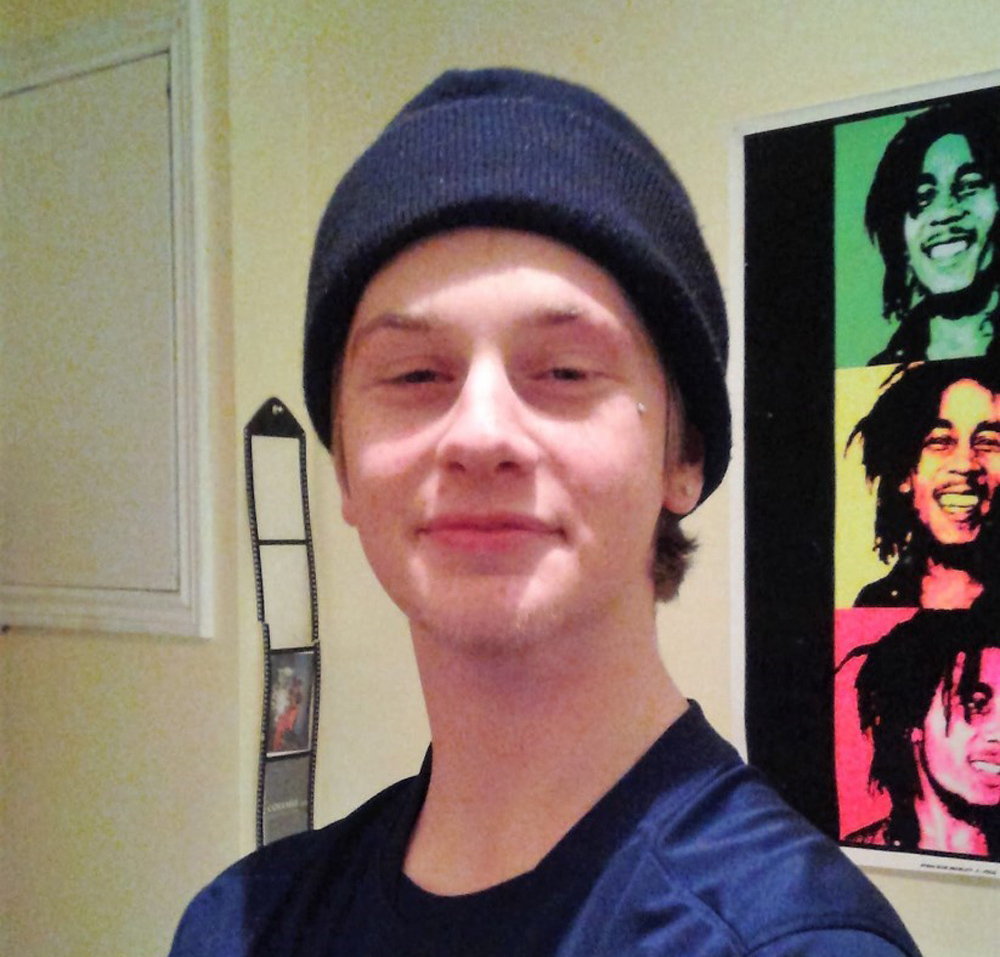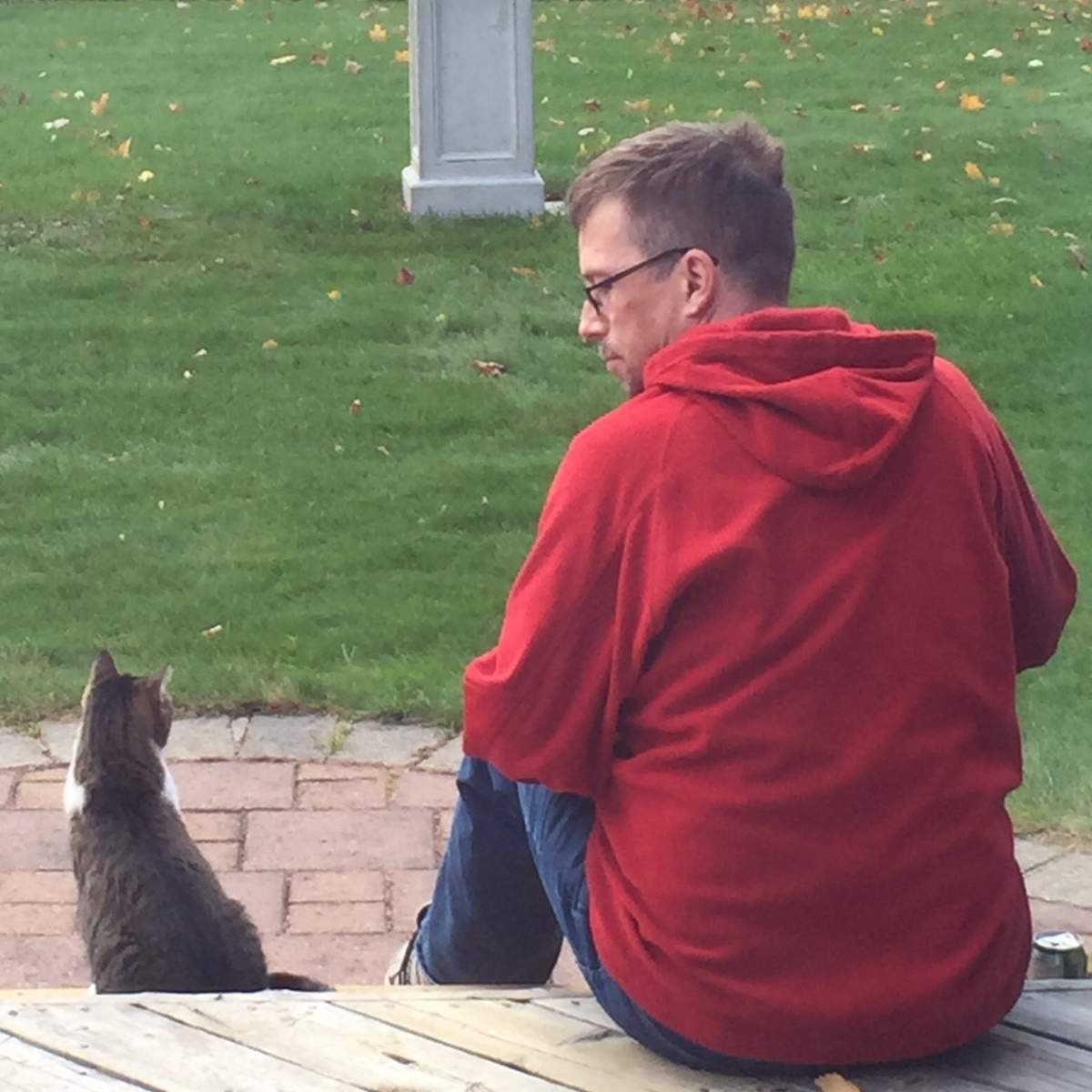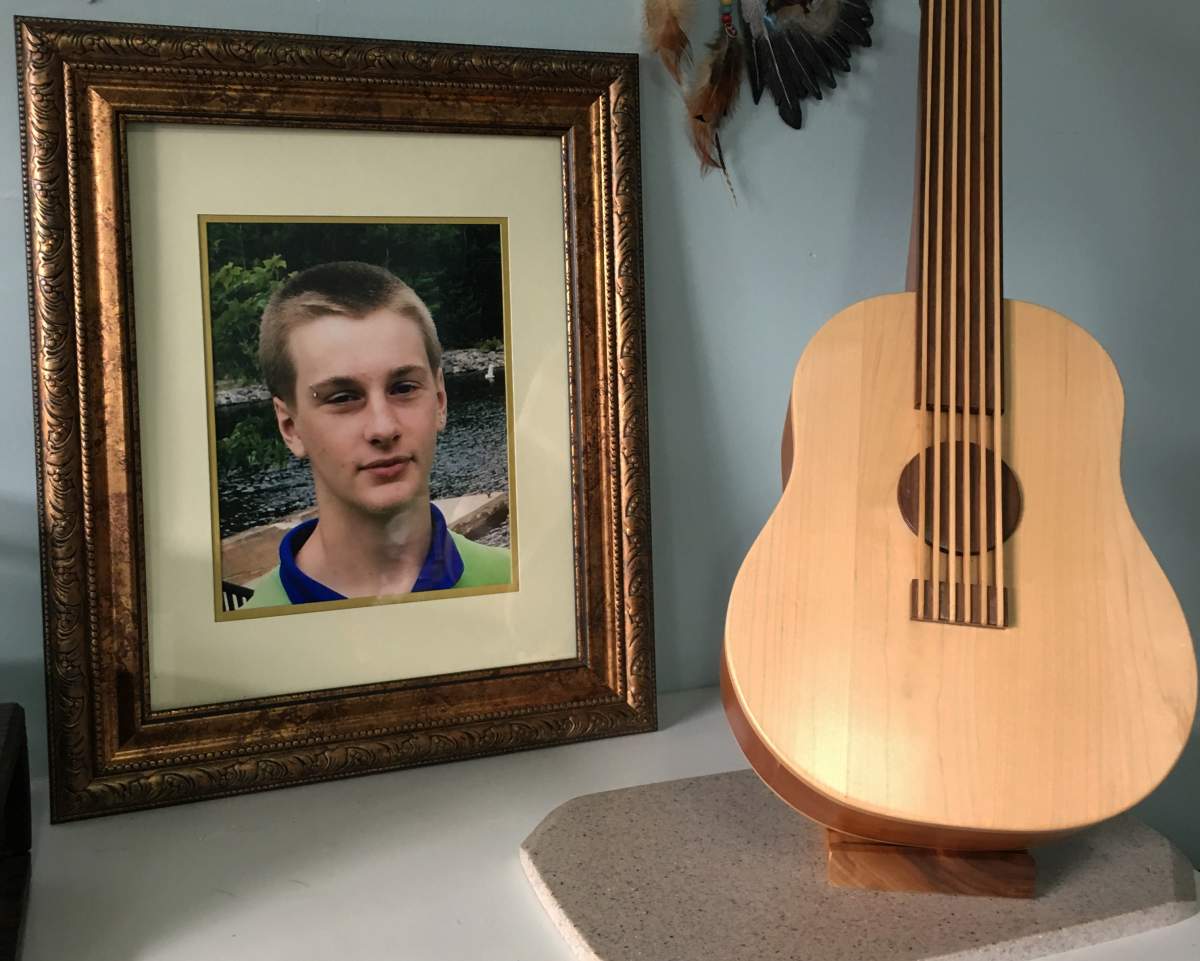Angie Gorog remembers pulling up to her home in Orillia, Ont., and seeing the unmarked police car parked out front.

A feeling of dread washed over her, she said, as she received the news that still haunts her.
“The officer gets out and starts to say, ‘Angie, I’m sorry’ and I just lost it,” Gorog said.
WATCH: Angie Gorog says son was diagnosed with several mental health issues before dying from overdose

Her 19-year-old son Tyson had died of an accidental overdose on Oct. 2 2017 from carfentanil — a powerful opioid believed to be 100 times stronger than fentanyl. A dealer had told him it was heroin.
“There was a lot of screaming. A lot of emotion,” she said about hearing the news.
Growing up in Orillia, Tyson struggled throughout his teenage years with a variety of mental health issues, including depression and obsessive-compulsive disorder, turning to pot and then harder drugs as a way of self-medicating.
During his battle with addiction, Gorog always maintained an open and honest conversation with her son. He told her about the times he almost died from overdosing, as she listened helplessly.
“The last couple years before he died, every time he had a birthday we’d talk about, hey you made it,” she said.
Now, Gorog wears a blue heart-shaped necklace containing her son Tyson Hunter’s ashes. It’s a reminder not only of her son but a symbol of her crusade against the deadly opioids that have devastated communities across the country.
“Tyson’s death was determined to be a mishap of adventure. Which is frustrating. I try not to get consumed by the darkness of his death. But to hear that it’s just a mishap of adventure isn’t accurate. He didn’t just go ATVing and fall down.
“He thought he was getting heroin. He was trying to use it so that he wouldn’t die,” she said. “He didn’t get heroin. He got carfentanil, and it killed him.”
WATCH: Six mothers who lost their children to lethal opoids speak out about what needs to change

The Simcoe-Muskoka area of Ontario has been hit hard with an overdose rate significantly higher than the provincial average.
In 2017, Simcoe-Muskoka saw the rate of emergency hospital visits for opioid overdoses rise to 77.1 visits per 100,000 population, higher than the Ontario rate of 54.6 visits per 100,000 population, according to Public Health Ontario.
Between 2013 and 2017 deaths more than doubled to 81 per year.

Get breaking National news
Police across Ontario have described how traffickers can range from anyone with access to the internet to large-scale organized crime networks, including Asian crime groups, biker gangs and Mexican cartels.
Fentanyl and its analogues are either shipped in the mail to Canada from China, or piggyback along with drugs like cocaine shipped into Canada across the U.S. border, according to interviews with several police sources and court documents.
Gorog, who worked for 17 years with the Simcoe-Muskoka health unit, is one of several mothers in the area who are fighting back against the opioid crisis following the death of a child. She’s completing a degree at Georgian College to become a child and youth care practitioner and has already completed a diploma to be a social service worker.
She hopes to begin working in the field helping at-risk youths early next year.
“This touches so many people,” she said. “I want to scream loud and clear that our kids need help, our people need help, and the families need help in the community. In so many aspects. It’s not just one solution.
Another mom, Evelyn Pollock, has become one of the leading voices in the community following the death of her 43-year-old son Daniel. She is a member of Simcoe Muskoka Opioid Strategy (SMOS), which was created in response to the overdose crisis and is composed of police, health officials, and families.
“Everyone knows Evelyn. She’s a strong woman and advocate,” Gorog said. “It’s awesome that she’s finding the strength to give us a voice.”

Pollock’s son struggled with drug and alcohol addiction for more than two decades. He left home at 15 and for years would be on and off the streets of Toronto, even spending a short time in jail.
Evelyn and her husband did everything they could to help Daniel, paying for apartments, trips to rehab and visits with psychologists and social workers.
“We were torn, and we worried about it every single day. I don’t think there’s a day that we didn’t worry about him,” Pollock said.
When he turned 40, Daniel started to turn his life around and moved from Toronto to Orillia, where he settled into a mobile home with his cat T.J. He took stone sculpting classes with Evelyn and last year had made plans to travel to Alberta to meet his birth mother.
WATCH: A look at exactly how profitable the opioid is for criminals in Canada.

But he never got to make the trip. On the morning of Sept. 15, 2017, neighbours found Daniel lying on the bathroom floor holding a syringe in his hand.
“He was, I believe, moving in the right direction. He was a thousand times better than he’d been,” she said. “I believe that his future had possibilities.”
Toxicology tests found fentanyl along with smaller amounts of cocaine in his system.
“This epidemic of deaths is caused by murderers who are adding toxic chemicals to the drugs that ordinary people are taking.”
For Gorog and Pollock, the fight against fentanyl has been challenging as they have come up against a legal system they say doesn’t adequately punish dealers and a province dragging its feet.
“In that situation, you have someone selling a drug and injecting it, almost like they’re administering it like a nurse or a doctor would, a medication that ends their life,” Gorog said. “How is that not worthy of some kind of investigation?”
“I don’t know how we’re going to really solve this problem,” she said. “There’s so many gaps in the big pieces of what leads up to it. That you end up with a dead child.”
A spokesperson for the Ontario Provincial Police directed questions to the Ministry of the Attorney General, which declined to comment on Hunter’s death.
WATCH: How fentanyl gets into Canada

Pollock and Gorog are part of the SMOS committee that released a comprehensive strategy to address opioid use, addiction and overdose in the region last June containing five pillars: prevention, treatment/clinical practice, harm reduction, enforcement, and emergency management.
Barrie is one of several cities that has been left in limbo waiting for an overdose prevention site. But with a government led by Premier Doug Ford, Pollock said Ontario wasn’t moving fast enough to slow the rate of overdoses.
“I think he’s made a mistake,” she said, referring to the delayed opening of the site. “If it happened to his kid, he might feel a little bit different. Harm reduction means helping people to reduce the harm in their life because of medical problems. Addiction is an illness.”

Ontario’s Health Minister Christine Elliott declined to be interviewed for this story.
The Progressive Conservative government was widely criticized for its review of prevention sites, which ultimately found they help reduce drug-related deaths and lower the rate of public drug use.
Elliott said in late October the PCs would spend just over $31 million a year to fund a maximum of 21 sites, now to be called “Consumption and Treatment” services sites.
“We know we don’t truly save a person’s life until we help them beat their addiction,” Elliott said in an email. “Our government’s overriding priority is to ensure that all efforts to combat opioid addiction are designed to introduce people into rehabilitation and that those struggling with addiction get the help they need.”
Three years before her son’s death, Pollock published a memoir of his life titled Thirty-three Years to Conception: A Voice from the Street, for anyone who wants a first hand account of addiction and her family’s struggle.
“My hope was that this book would be part of his healing journey and would also help other families who faced similar challenges,” she writes.











Comments